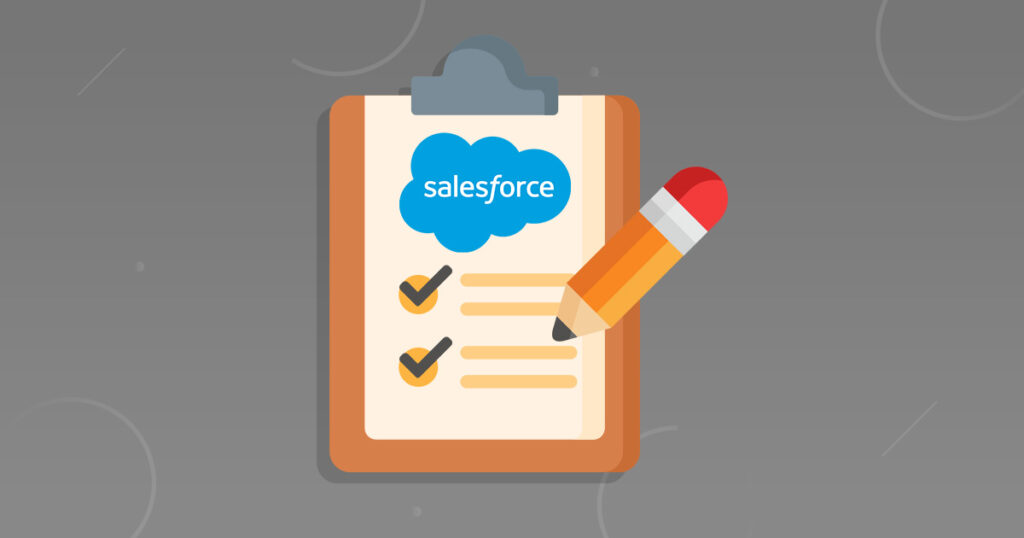Moving Beyond the License Cost: Building the Multi-Million Dollar Business Case for Your Salesforce Transformation
For most organizations, the Salesforce investment begins with license fees. However, when factoring in implementation, platform integration, governance, and change management, the total cost of ownership (TCO) represents a significant capital expenditure.
This reality presents the primary internal challenge for business leaders: securing executive buy-in and capital allocation.
The critical question is not “how much does Salesforce cost?” but rather, “what is the strategic value of a Salesforce-enabled transformation?”
This post provides a framework for shifting the conversation from cost to value and constructing a business case that withstands executive scrutiny.
A business case built solely on “efficiency gains” is insufficient for securing a multi-million-dollar budget. Executives expect to see measurable, financial outcomes tied directly to enterprise value.
Salesforce, when implemented with robust processes and governance, drives material improvements in:
- Forecast accuracy. Even modest improvements in pipeline predictability (2–3%) can positively influence capital markets, investor confidence, and revenue planning—directly impacting shareholder value.
- Compliance risk reduction. With proper configuration, Salesforce features like audit trails, permissioning, and data governance reduce the likelihood of costly regulatory violations (GDPR, SOX, HIPAA). The cost of a single fine can often outweigh the entire program investment.
- Customer lifetime value (CLV). By enabling sophisticated renewal tracking, upsell/cross-sell visibility, and personalized engagement at scale, Salesforce supports measurable improvements in CLV and net revenue retention.
- Sales cycle velocity. Guided selling, CPQ, and process automation can materially shorten complex deal cycles. Trimming even one week from high-value enterprise sales translates into millions in accelerated revenue recognition.
When quantified in financial terms, these outcomes reposition Salesforce from a software expense to a strategic growth driver.
Senior leaders are trained to scrutinize assumptions. A compelling Salesforce business case anticipates their questions before they are asked.
To strengthen your position:
- Tie the case to the company’s top three strategic goals. Link the Salesforce investment directly to the company’s top-three strategic goals, such as revenue growth, margin expansion, or customer retention.
- Define metrics and baselines. Do not just claim “faster sales cycles”—present the current average cycle length and model a realistic, defensible range of improvement.
- Address risk and compliance. Detail the governance frameworks, security policies, and internal controls that will be implemented to reduce corporate exposure.
- Include change management. User adoption is the single largest driver of ROI. Budget explicitly for training, enablement, and a continuous support model to maximize value realization.
- Benchmark against peers. Reference Salesforce case studies or analyst research demonstrating how similar enterprises have driven measurable value from their investment.
This approach reframes your initiative from a technology spend into a transformation narrative that advances corporate strategy.
The most common reason Salesforce business cases fail at the leadership level is overpromising on returns.
Senior executives do not want inflated claims—they require confidence in the financial model. To achieve this:
- Utilize Conservative Assumptions. If you expect a 15% improvement in a specific KPI, model the financial impact at 5–10%.
- Translate Benefits into Cash Flow Impact. Phase both costs and financial benefits over a multi-year timeline to accurately reflect cash flow.
- Incorporate Avoided Costs. Factor in the quantifiable costs of manual reconciliation, legacy system maintenance, and compliance overhead that will be eliminated.
- Provide Multiple Scenarios. Build base-case, upside, and downside models to demonstrate the resilience of the business case under various conditions.
A credible ROI is one that would withstand an internal audit.
- Global expansion? Position Salesforce as the unified platform for consistent global visibility and adherence to local compliance mandates.
- Margin improvement? Demonstrate how automation reduces administrative cost, minimizes order-to-cash friction, and reduces costly errors.
- Customer retention? Connect Salesforce’s service, marketing, and renewal capabilities to measurable improvements in CLV and gross/net renewal rates.
The challenge for senior business leaders isn’t proving that Salesforce is powerful. It’s proving that the transformation delivers quantifiable business value.
By framing the investment around forecast accuracy, compliance, CLV, and velocity – and by modeling ROI with the discipline executives expect – you move Salesforce from an expense line item to a multi-million-dollar growth engine.
At CRM-forge, we partner with enterprise leaders to architect frameworks that turn Salesforce into a trusted system of record. Let’s build the foundation for predictable revenue and data you can rely on.









